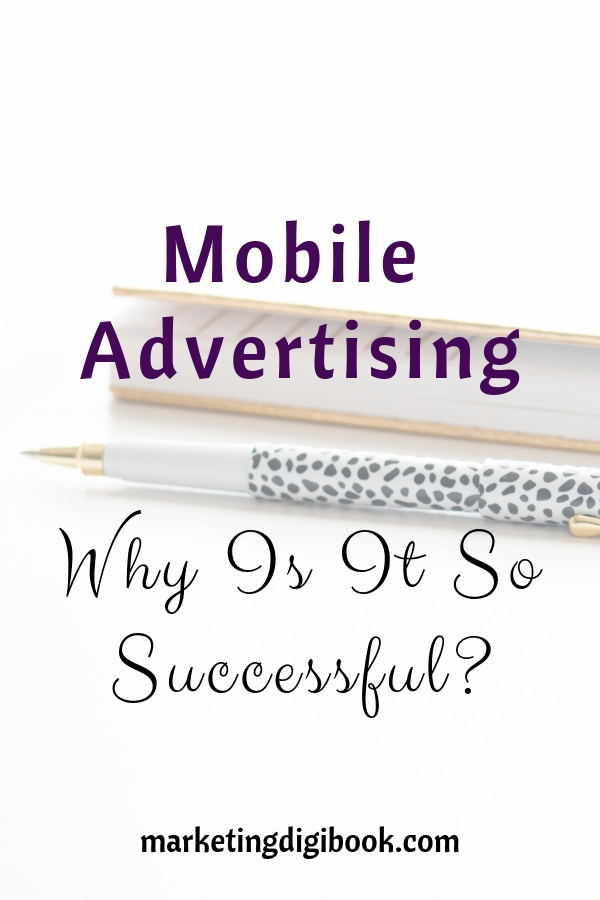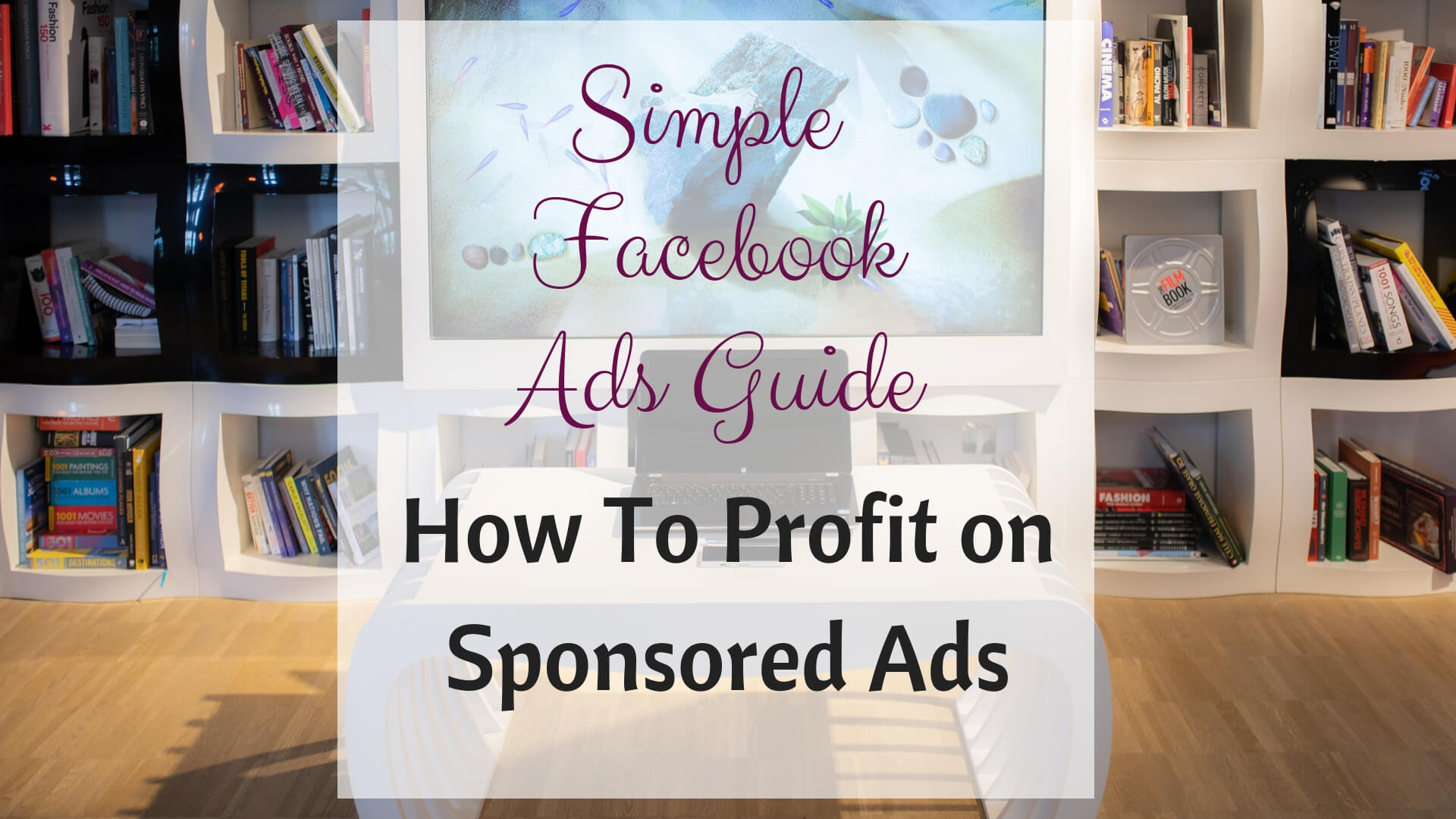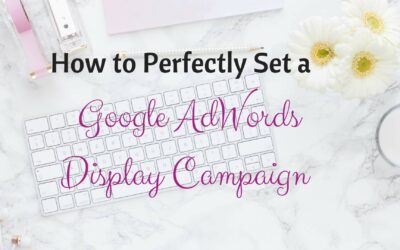In the first half of 2018, a report by Interactive Advertising Bureau and PWC showed that marketers spent $30.9 billion on mobile advertising alone, marking 63% of their total digital ad-spend. This change has been spurred by the rapid growth of mobile device usage. This growth can further be attributed to the fact that consumers are quickly embracing the newest technology that will ease their life a little more.
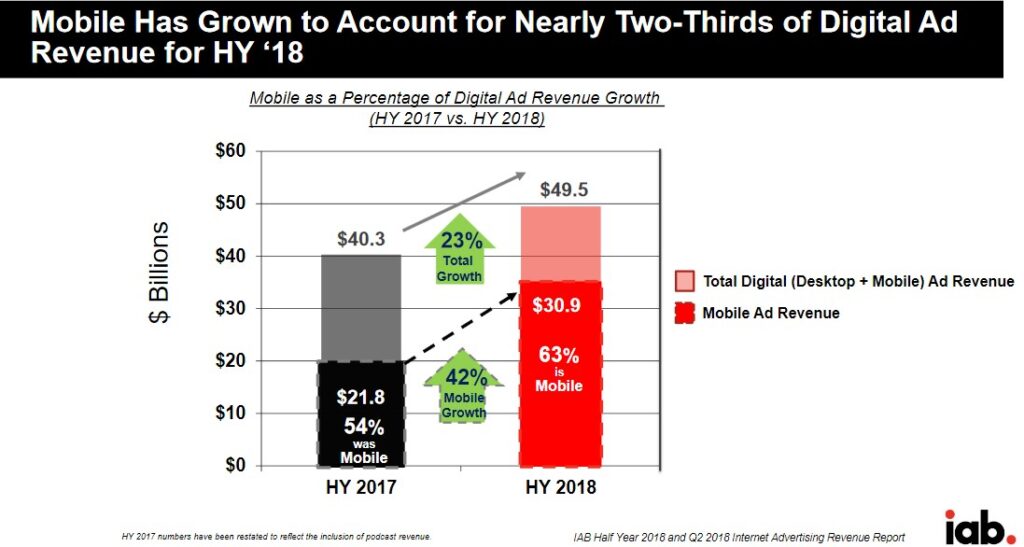
It also means that businesses are leveling up their marketing efforts in order to keep up with these advances in technology specifically tailoring their ads to be more mobile-friendly. Smartphones and tablets are gaining popularity because they’re smaller, lighter, more affordable, and portable compared to PCs and laptops. Manufacturers on the other hand keep feeding the demand by developing faster and more user-friendly mobile devices.
With this said, digital marketing will keep evolving and mobile advertising will keep playing the main role. So it’s up to marketers to ensure they have a cohesive mobile marketing strategy in order to connect with the digital consumers in this market that keeps getting riper for further growth.
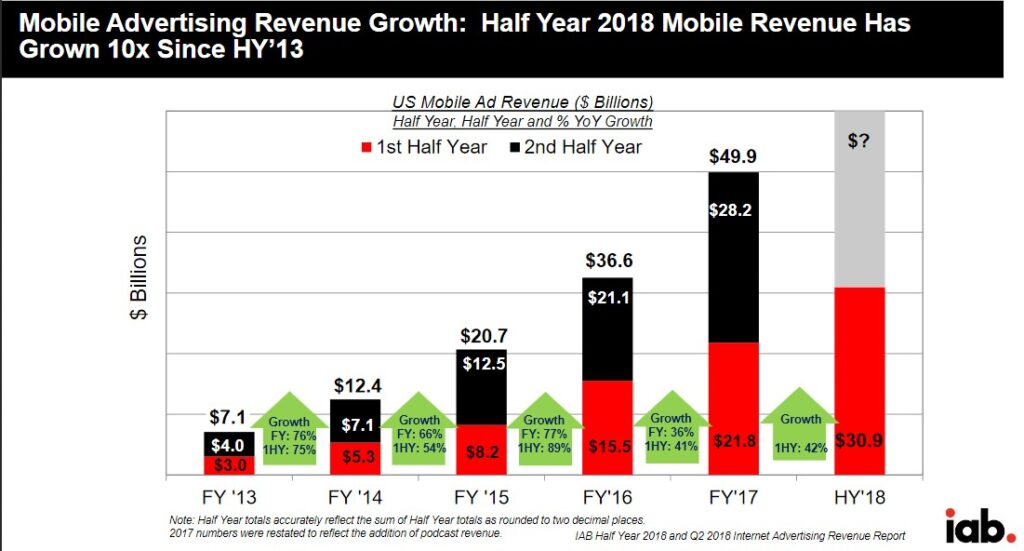
Source: IAB
So, Why Are Mobile Ads More Successful?
There are several mobile advertising advantages and disadvantages, but because the advantages outdo the disadvantages, here is a closer look at why they’re winning.
1. The Increasing Time Spent on Mobile Devices
More than 4,5 billion people own and use smartphones in the world as of 2019. Think about it, how much time do you spend on your phone, as compared to your PC or laptop? These statistics are what advertisers are trying to catch up on in order to reach more customers.
With up to 80% of web traffic happening on mobile, it’s then more than clear why, this is where most customers will be found at any given time.
Let’s Make Your SEO & Content Work Better for Your Business
2. Relevance – Spot-on Target
The mobile’s precision is one of its greatest advantages as far as advertising is concerned. The increased connectivity that mobile devices especially smartphones have enabled is creating a dynamic shift as far as relevance, speed, and target location are concerned.
Your stellar creative campaigns have great potential thanks to the fact that smartphones are not only receivers, but they’re also transmitters of information. They’re huge information mines on individual tastes and preferences.
This means advertisers and marketers have the chance to be more specific by personalizing ads based on individual user preferences, buyer behavior, and location, and therefore offer more relevant content to their users.
3. Immediate
Besides being very precise, mobile advertising is also about the perfect mobile moment. What does this mean?
It’s possible to create a sense of urgency that can inspire immediate engagement if you find the perfect mobile moment. This means creating ads based on time combined with location. For example, if you’re advertising a coffee joint, you may want to do that in the morning, if your ad has a CTA, then it’s likely to create that sense of urgency that will encourage the customer to go get the coffee at that time.
This immediate engagement is very practical and easy.
4. Mobile Ads Are Interactive
Mobile ads aim to provide better quality advertising engagement for their users by combining precise targeting with compelling formats to give relevant and engaging content to their users. This makes the user spend a little more time with the brand, boosting the overall engagement time.
This interactive nature of the ads provides a valuable midpoint between the advertiser’s needs and users’ solutions.
5. Conversion Oriented and Cost Effective
Why are mobile ads cheaper? Remember as said above, these ads are precise in their targeting. This is one of the reasons they are cheap as compared to other forms of advertising, you create ads for only who you need to see it. The nature of this medium is also cheap, unlike most other advertising platforms that may involve countless ad prints or expensive ad spaces or ad time.
Another reason they’re affordable is that tracking and measuring your results is easy therefore you’re able to save money where the strategy is not working.
Types of Mobile Advertising
Here is a highlight of the most effective types of mobile advertising.
i. Native Ads
These ads mimic the original app format for optimal user experience and thus are least intrusive and this is why they’re so successful. Being part of the app, they are displayed in varying forms. They can work with any type of app since they’re perceived as additional information for users and not just ads looking to make a sale.
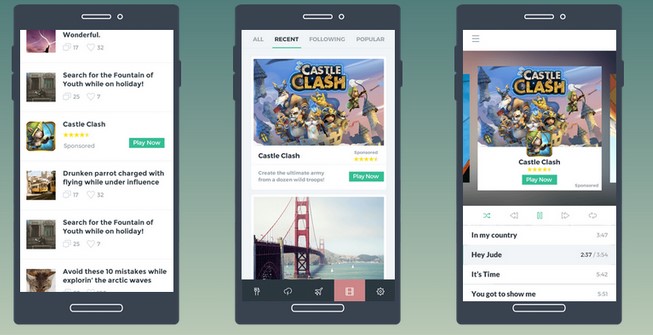
Source: Businessofapps
ii. Interstitial Ads
These ads are more interactive and they spread across the entire screen, often when either the app is loading or after the app closes. They often feature a very creative call to action to engage the user.
They’re often in the form of photos or videos and because they occupy the whole screen, they will always have a close or navigate button at the top right side of the screen.
Interstitial ads may seem intrusive if you will not try being as creative and interesting as possible. You can also avoid boring your users if you place the ad between main activities.
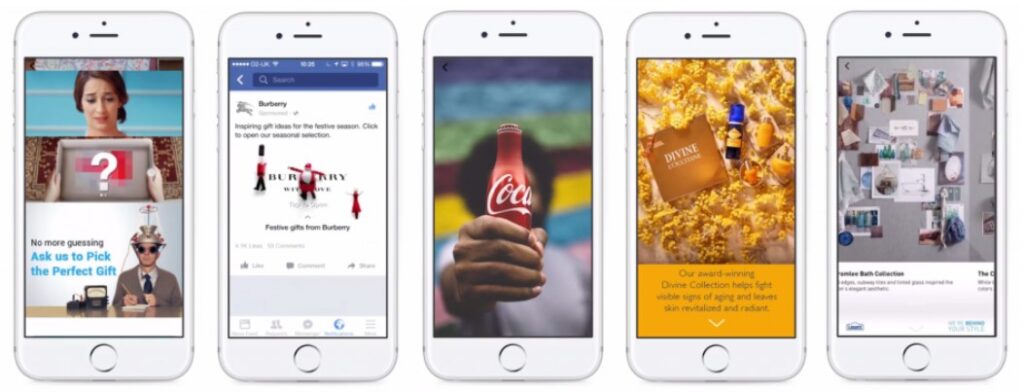
Source: Mobilemarketingmagazine
iii. Video Ads and Reward Video Ads
Mobile video ads are easy in their concept yet pretty complex in execution. These videos play while a user interacts with an app. As demanding as they can get in terms of budget and execution, they are very effective due to the visual effects.
When done right, these videos can go from just compelling to engaging. Similar to interstitial ads, they have exit buttons for the user to return to whatever activity they were exploring.
Reward Video ads are spruced-up video ads in the sense that they offer benefits for users if they watch till the end. This is especially common when playing games; you can for example get an extra life if you watch the video till the end.
These reward videos are usually very short and don’t have a skippable button. The reason they are very effective is the reward they offer, users are often very pleased and interested in these rewards.
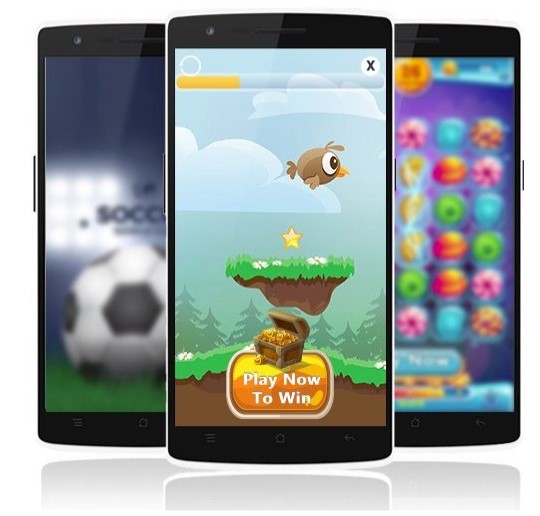
Source: Chocolateplatform
iv. Banner Ads
The good old banner ads still remain popular even though they’re very famous for causing banner-blindness syndrome. People have gotten so used to these types of ads they have mastered ways to simply ignore them together with their (often) very poor user interface. (UI)
But why are they still used?
Because they’re handy and very cheap. The key thing is to have a very catchy CTA and appealing colors because that’s all the space you have, and also because it has to deliver the message in the one second of eyeball it gets.
They’re also easy to implement and compatible with mobile apps, they’ll give you the basic brand awareness you’re looking for.
v. Rich Media Ads
These are more like spruced-up banner ads. They include audio, video, and other elements that are geared toward boosting engagement and interaction with the user.
Also known as multimedia banner ads, these ads can appear in feed or full screen and are specialized to creatively engage with users to generate high click through rate and conversions.
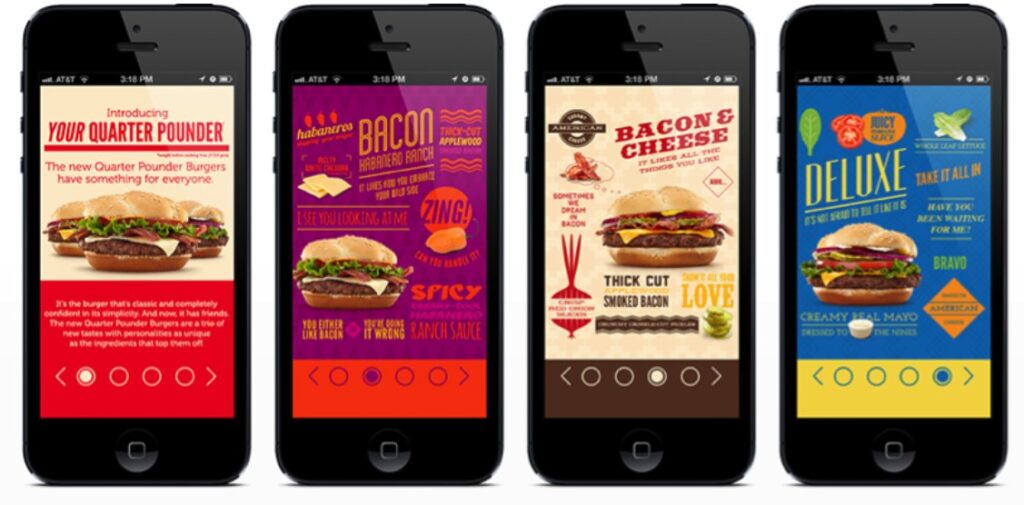
Source: Mobileads.com
What Platforms Work Best with Mobile Advertising?
Mobile advertising platforms refer to ad networks, ad servers, programmatic ad buying or any digital advertising solutions that support ad campaigns that span mobile display or mobile app advertising across mobile platforms such as smartphones and tablets.
Here are some of the best platforms:
a. Google Ads
Google Ads are quite convenient because your content can show both on desktop and mobile devices. And if you wish to target mobile users alone, you can use display ads and select device targeting to direct your content only to tablet and or smartphone users.
This platform offers the possibility to run ads within browsers, apps, and of course Google search results. In the specific case of mobile devices text ads, video ads, and image ads may be published within very targeted promotion campaigns via apps.
Why this is really one of the best platforms? Because you have access to the largest search engine, this puts your ads in front of the largest audience possible at this moment.
b. Facebook and Instagram Ads
These social media giants really are the ideal marketplace and both their ads are managed by Facebook’s ad platform. It recently launched Audience Network which is a very user-friendly ad platform. You’re spoilt with choices on what type of advertising to use for your campaign including native ads, rewarded video ads, and all the above-mentioned types of mobile advertising.
You can do advanced targeting on this platform and profit from their gigantic base, using criteria such as location, gender, age, likes and interests, job, education and so much more.
What’s more? They offer very affordable rates if you’re working on a budget.
c. Ad-Mob
Ad-Mob was acquired by Google in November 2009 and has since dominated online advertising. It’s one of the best platforms for beginners because of its simple app integration.
Just like Google Ads, you can target your audience depending on their location, carrier, operating system, and the like.
All the above-mentioned types of mobile advertising can also be used via this platform.
d. AdColony
This is probably the choice for top mobile publishers worldwide because of its unique features such as rich demographic targeting, media, and video integration with both Android and iOS. It’s the pioneer advertising platform that offers Instant-Play™ HD video ad technology that plays on any device irrespective of the quality of their internet speed.
They also offer a premium service that allows advertisers to target their audience very precisely guaranteeing user response. Mobile advertising examples that have used AdColony include Adidas and Farmville.
e. Twitter Ads
This social media platform is also another great mobile advertising channel. Here, you’re also able to target your ad only to your personas of interest, and you can shift this audience depending on their activity on Twitter as well as their location.
Another unique feature they have is that you can pay only for the actions that you would want your target audience to carry out e.g. app download.
f. Unity Ads
This ad platform is very popular with games because it allows developers to boost their monetization by offering in-app purchases displayed on videos to players.
It delivers ads to players that would most likely be interested in playing a certain game. Another great feature of this platform is that you don’t require integrating an additional advertisement software development kit (SDK); it supports several display formats and works seamlessly with both Android and iOS.
g. ChartBoost
This is another great mobile app advertising platform dedicated to game developers because it allows cross-promotion. It works excellently with video ads and interstitial ads as well. It offers easy integration and only one SDK is required.
This platform provides full control over your ad space allowing you to pick who will advertise in your app. Game developers like it because it supports them by allowing them to keep most of their income.
h. Apple Search Ads
Apple Search Ads is an advertising platform owned by Apple. The major problem with this platform is that even as technology breaks all borders, it’s still very regional and can only be found in a selection of countries, are the US, Australia, Canada, Mexico, Switzerland, New Zealand, and the UK. That said, its main feature is that developers only get to pay per install and the ad shows on the top of search results.
So, with all the above information given, how then would you set up an effective mobile advertising campaign?
Main Steps to Set Up a Mobile Advertising Strategy
For anyone in business, it’s important to awaken the fact that customers are consuming data in new dynamic ways. Therefore as a marketer, you need skills that complement your mobile marketing strategies to be able to level up your campaign for the best results.
Your campaign should be customer-centric, the content you’ll serve your customers with is what will develop your brand and ideally pull them into your sales funnel. So, where do you start?
1. Define Your Mobile Ad Objectives
You must have a purpose that got you here in the first place. And this might be to create or strengthen your brand awareness, boost sales, drive web traffic to your site or just promote a specific deal, whatever it is, be clear from the start. This will determine so many other aspects as you progress through the entire campaign.
2. Know Who Your Target Audience Is
After establishing what you want to achieve, the next important thing is who you will be targeting with this campaign. This involves knowing who they are, what solutions they are after in regard to what you’re offering them, and where they are in the buying process.
You can get all this information through a survey, for example.
Consider finer details such as screen sizes and the fact that consumers today have such a short span for any boring stuff including ads. What they expect is creative content and visuals that grab attention.
3. Choose Your Ad-Type
This is truly simple. As explained earlier, there are various types of mobile ads campaigns so you can consider the one that will best work for your product and budget and run with it.
4. Map Out Your Campaign Time
At this point, you have your objective; know your target and ad type that you want to use; the next detail to consider is the period through which you’ll want your ad campaign to run. This will be determined by the number of actions you want the users to take. It may just be one action like clicking on the “Buy” button or several actions starting from brand awareness running all the way to the purchase step.
So, obviously the more numerous the actions the longer will take to create the campaign.
5. Device Consideration
As said above, different mobile devices need different types of content in terms of quality. iPad users and most other tablet users for instance tend to expect higher-quality content. Smaller screens will also need quality content that is tailor-made to fit in their screens.
Simply put, this means that you ought to offer the best for both worlds in order to get the best results.
6. Define Your Metrics
You don’t know how your mobile ad campaign is performing if you don’t have indicators to measure the results. You should know the metrics that you will track and one of the best metrics to track for mobile ads is the Secondary Action Rate, this shows the actions that the user took after clicking on the ad. It’s the best metric because smartphones with touch screens tend to give false measures due to accidental taps. So if the click was accidental, no secondary action will take place.
Secondary actions to look out for include click to buy, click to get a location pin, click to visit the site, add a product to cart, subscription, etc.
Other metrics to track are brand lift; conversion rate and return on ad spend.
7. Design Your Ad
This is the fun part, right? Putting all your creative juices to work. So, before you start here are a few pointers that you should keep your finger on:
- Create persuasive content without forgetting to clearly state your message e.g. through your call to action. Make it compelling and elaborate.
- Use thoroughly engaging content to be able to keep the user glued to your ad for longer. This encourages interaction that may lead to a complete customer journey.
- Use top-quality graphics having in mind that you’re trying to woo various kinds of users on various devices. Keep in mind also, that your ad may be running on an app which is the user’s main activity so you have to earn the eyeballs.
- Ensure you provide a smooth UX by reducing the number of touchpoints a user has to go through between viewing the ad to responding to the call to action.
- Enhance your ad targeting to reap more engagement with the user, the more relevant your content will be to the user the more likely they are to engage. You should include all the target elements mentioned above such as location, age, user preferences, etc.
8. Launch and Measure
With all the above in place, you’re ready to launch your mobile advertising campaign. This is to be followed by frequent tests and measures of the important metrics that you identified.
This will guide you on the ones that are working and you can invest more time and resources on them.
Conclusion
Computers took advertising away from humans and now mobile devices have taken it away from computers. Why? Because more effective ways of attracting the right audience, at the right time and place mean delivering more value for consumers. With all the benefits ranging from precision in targets and relevance to the myriad of mobile advertising platforms available, mobile ads have no threat for now. Mobile advertising is the future of advertising.
